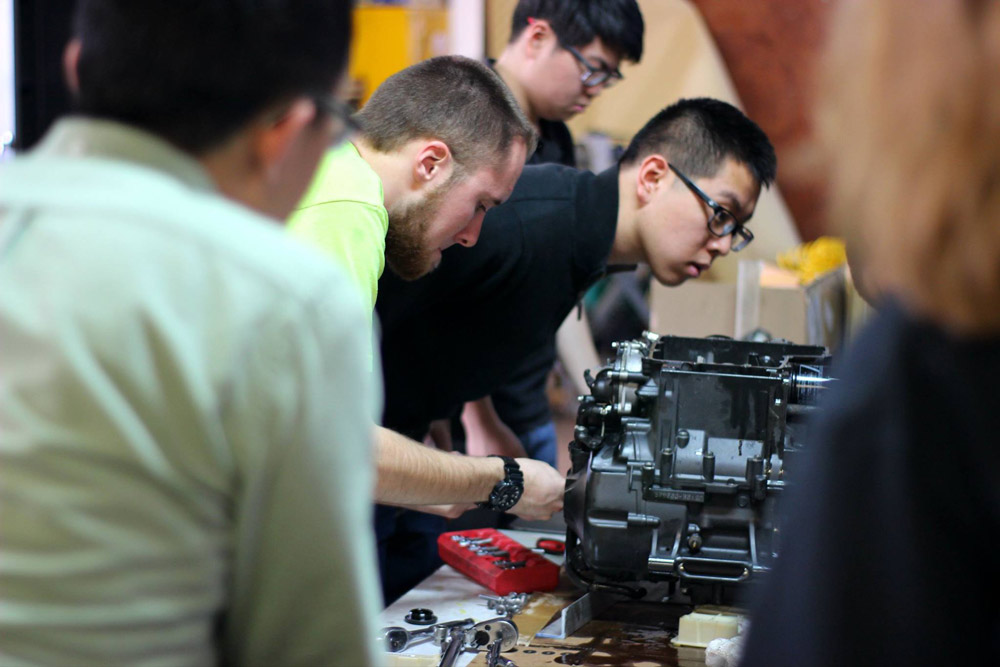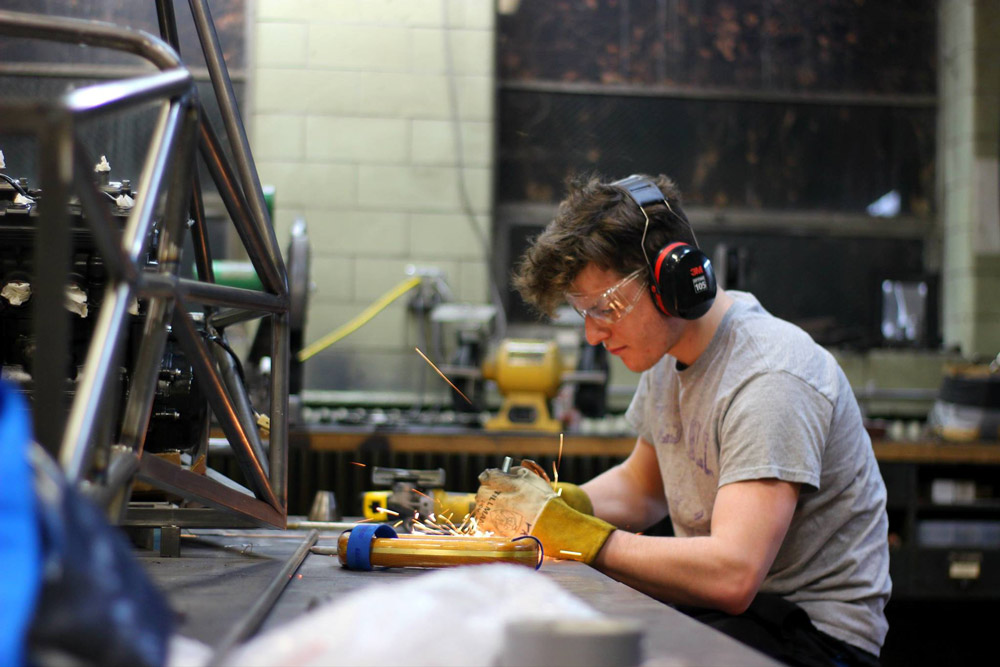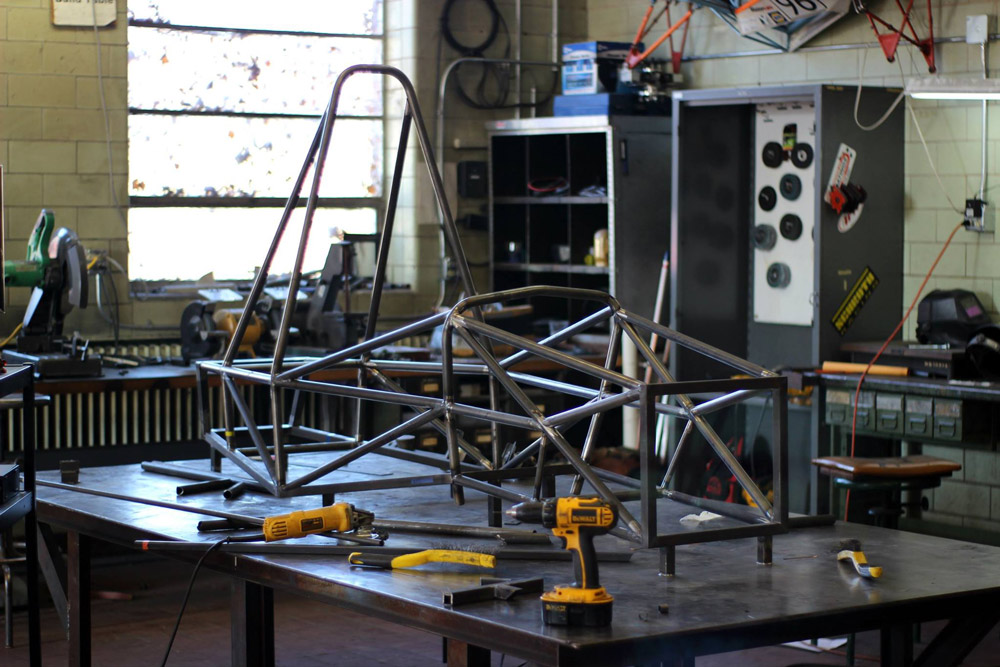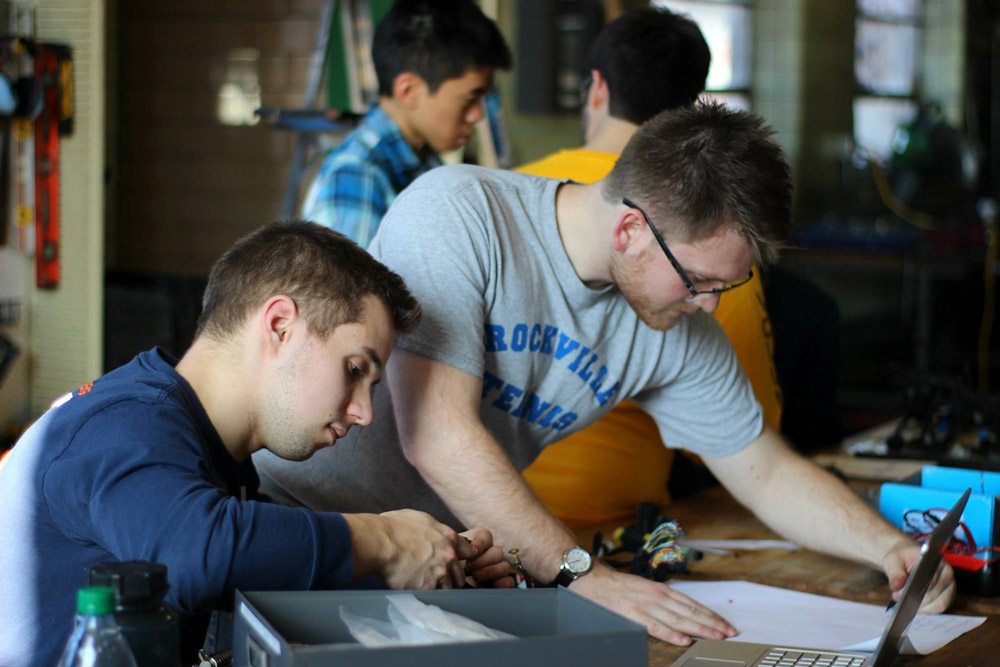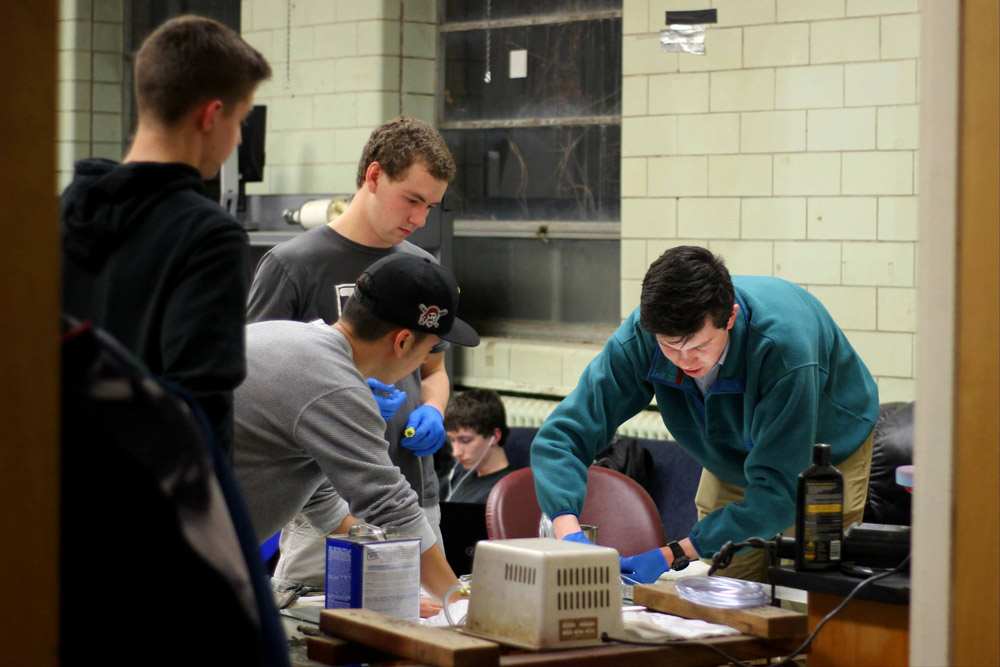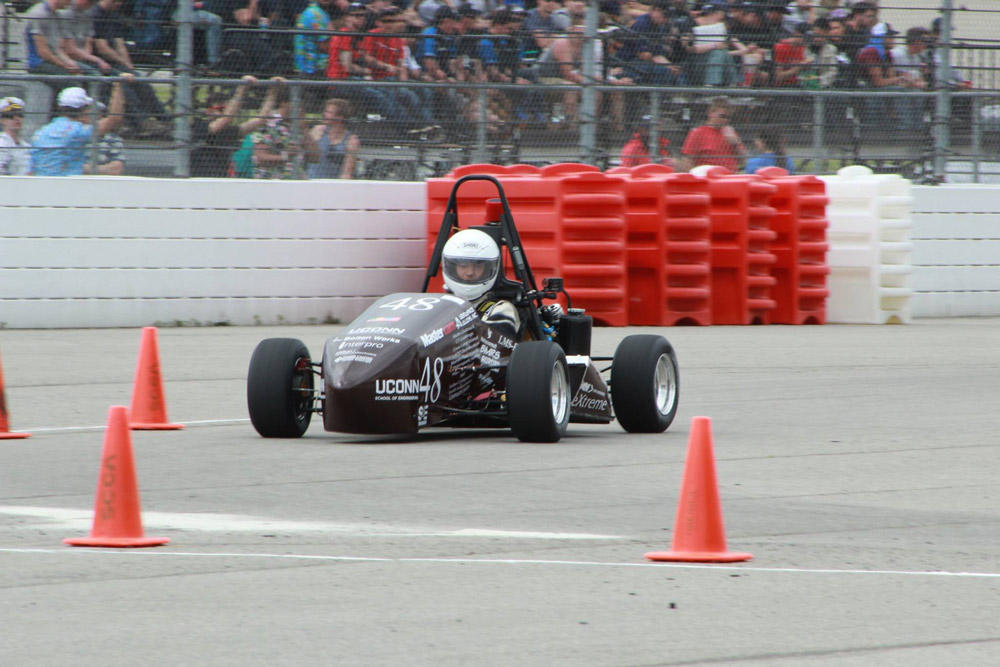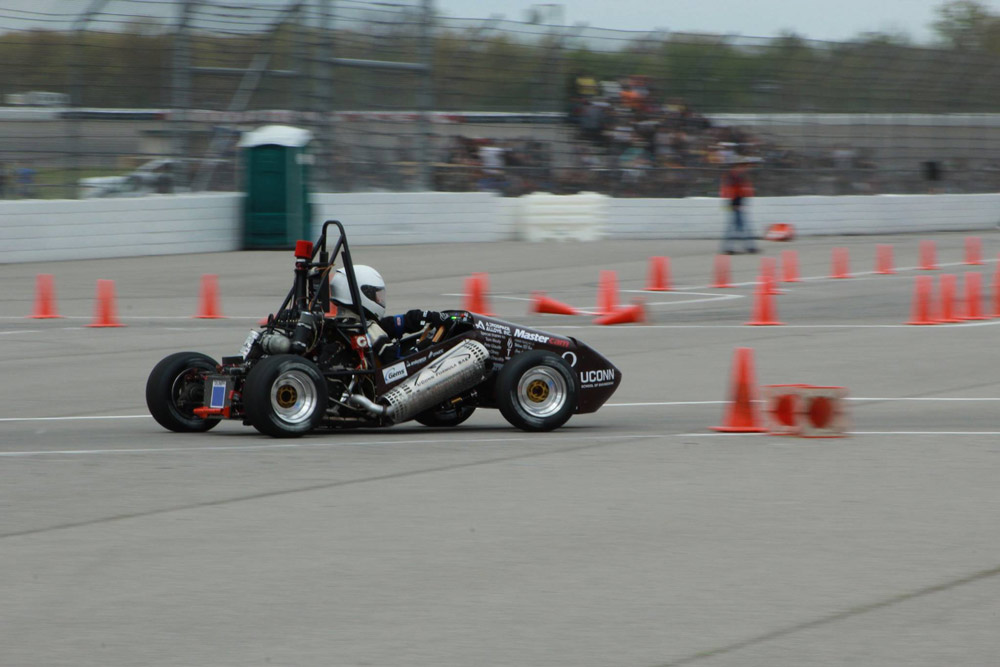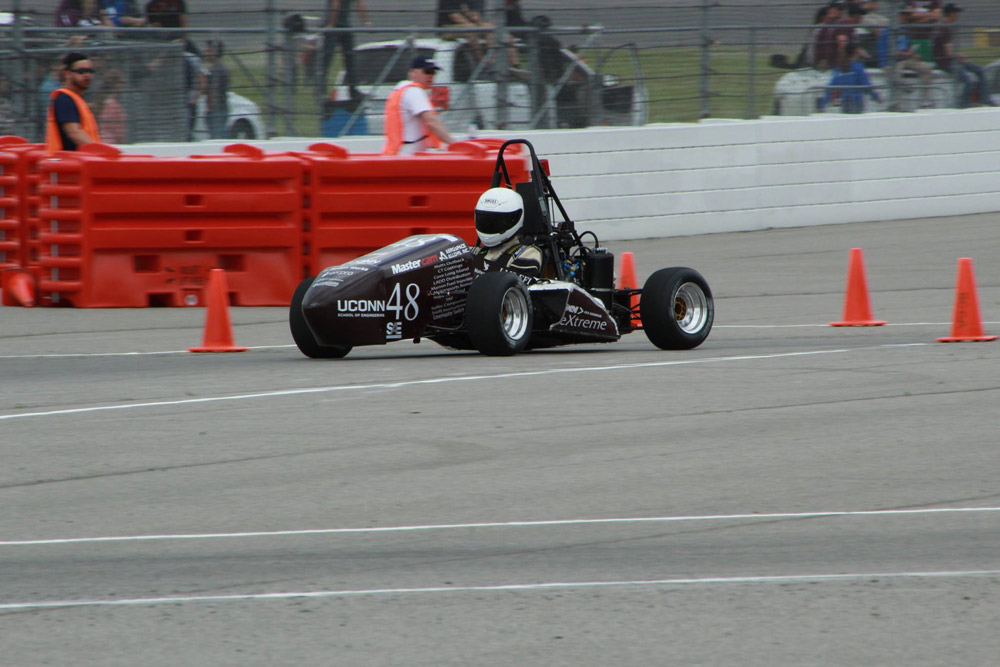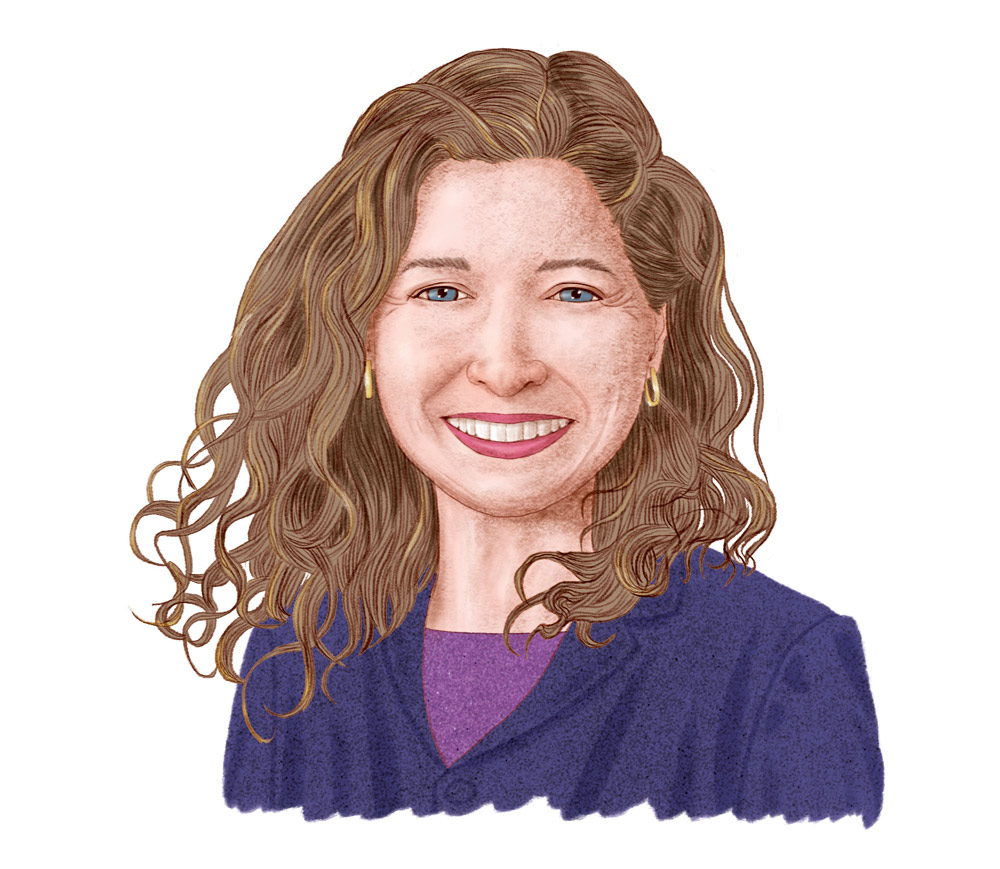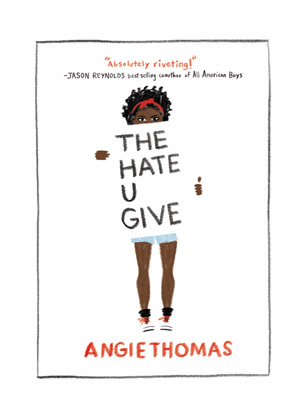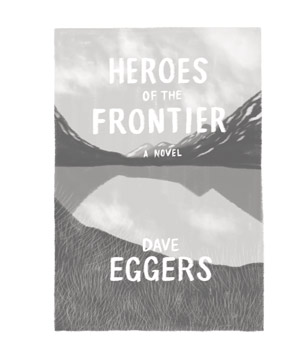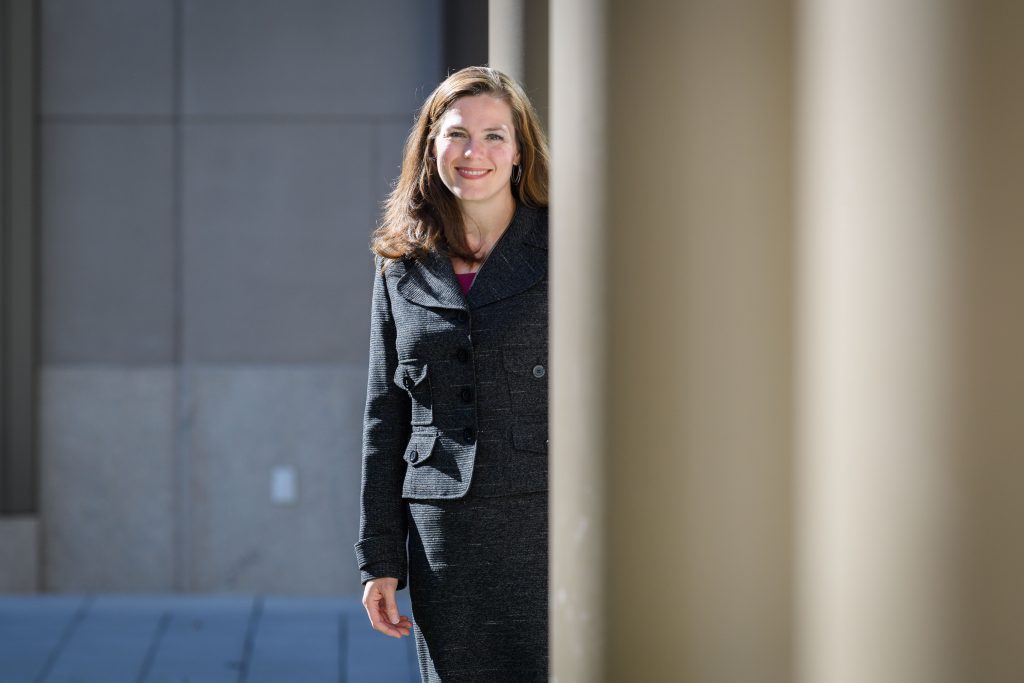“These Civil War monuments are not historical artifacts. They were primarily erected during the Jim Crow era to reestablish the historical social order in the face of Blacks attempting to gain equal rights.”
Blog
-
UConn Talks
On keeping some small purchases secret from your spouse:
“We find that when people engage or imagine engaging in this secret consumption activity, they feel a little guilty. And so then they’re driven to want to invest back in the relationship. People are actually benefiting in the long run.”
Marketing professor Danielle Brick, medium.com, Aug. 28, 2022
On why it’s so hard to change people’s minds:
“People form opinions based on emotions, such as fear, contempt, and anger, rather than relying on facts.”
Human development and family sciences professor Keith M. Bellizzi, The Conversation, Aug. 11, 2022
On being asked to share a fun fact for the Hartford Business Journal 2022 “40 under 40” interview:
“I can solve a Rubik’s Cube blindfolded.”
Operations and information management professor David Bergman, Hartford Business Journal, Aug. 15, 2022
On forcing future lawyers to disclose information about sealed convictions, juvenile cases, or arrests:
“It’s very unlikely that the information that is produced is going to predict who will later engage in misconduct.”
Law professor Leslie Levin, The New York Times, Sept. 6, 2022
On the much larger Andromeda galaxy colliding with and devouring the Milky Way – in about 5 billion years:
“It’s going to be like, bloop, done.”
Astrophysics professor Chiara Mingarelli, The Atlantic, Aug. 17, 2022
On Shinzo Abe, Japan’s longest-serving prime minister, who was assassinated in July:
“His personal vision for rewriting Japanese history, of a glorious past, created a real problem in East Asia, which will linger. It also divided Japanese society even further over how to approach its own responsibility for wartime actions carried out in the name of the emperor.”
History professor Alexis Dudden, The New Yorker, July 9, 2022
-
Test: New Swing Tree Garden
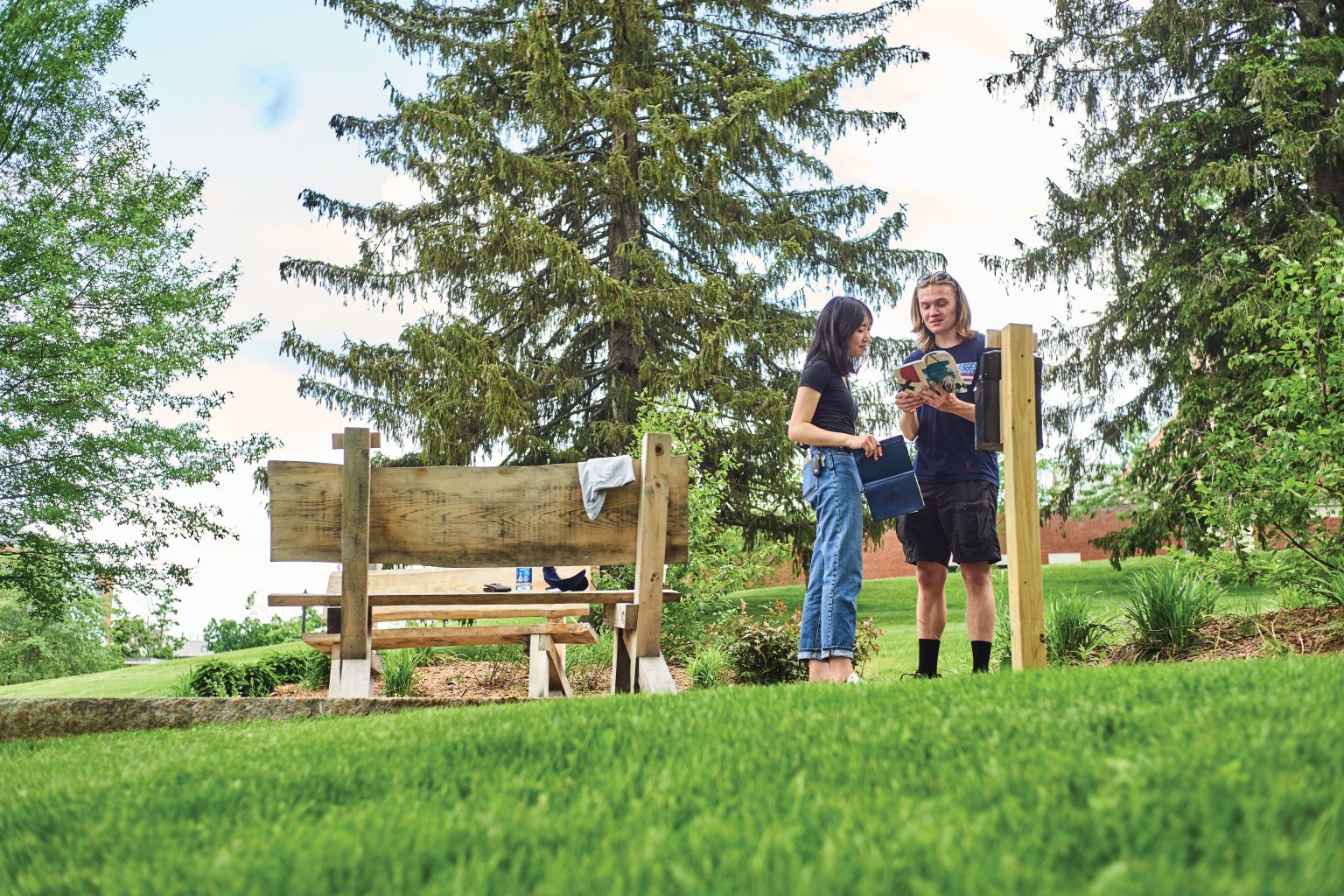
Photo by Peter Morenus
Lena Hiranthom ’24 (CLAS), left, and Jackson Kermode ’24 (CLAS) at Swan Lake’s new Swing Tree Garden, a tribute to the beloved Mirror Lake Swing Tree which, in failing health at age 70, was felled in 2019. The new garden has two saplings from that tree, two buddy benches that face each other to encourage conversation, and a box for journals so visitors can share reflections and encouragements.

Something new.
Photo by Peter Morenus
-
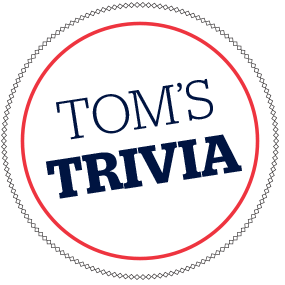
Tom’s Trivia
Challenge yourself to Tom’s Trivia!
See if you know as much as King of UConn Trivia and University Deputy Spokesperson Tom Breen ’00 (CLAS).
Scroll to the bottom to reveal the answers.

UConn’s school colors of National Flag blue and white were made official in 1952. What were the earliest colors known to represent the institution?
A: Orange and white
B: Red, white, and blue
C: Imperial blue and white
D: Midnight blue and whiteThe opening of the Downtown Hartford Campus this fall is the first time UConn has had an under- graduate campus in the capital city since 1970. How many previous locations have there been for the University in Hartford?
A: One
B: Three
C: Five
D: SixUConn’s Winter Weekend ”“ a bright spot during the cold New England months on campus ”“ began in 1979 with jugglers, an ill-advised parachute jump, and a “pajama party beerfest.” Only one activity has survived as a mainstay of campus life, though. What is it?
A: The Senior Scoop
B: A ski trip
C: One-Ton Sundae
D: Saturday basketball gameWhat non-Halloween costume tradition disappeared from University life after 40 years?
A: UConn’s president dressing once a year as the “Mayor of Storrs”
B: A parade through campus led by someone dressed as the Pied Piper
C: The football team and marching band swapping uniforms after the Spring Game
D: Students dressing as the mascots of Yankee Conference rivals to mock their teams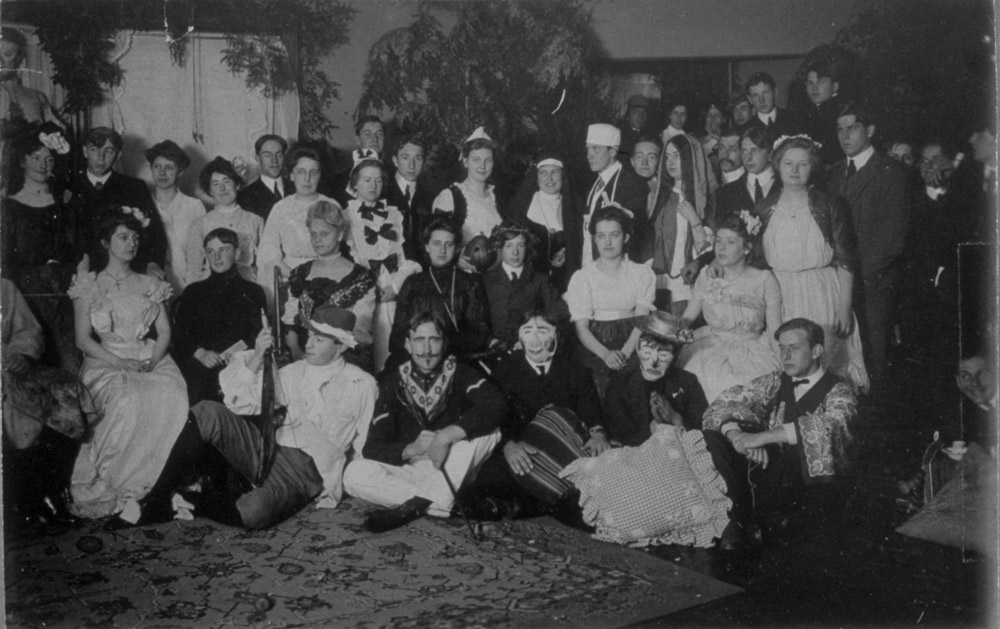
In 1904, some 40 students ”” a quarter of the student body ”” posed in their Halloween garb.
Answers
- C. In the 1890s, UConn colors were white and a very light blue, known as Imperial Blue, which is the earliest known use of colors to represent the institution that would become UConn.
- C. Opening as an extension center on Bellevue Street in 1939, the campus rapidly expanded after World War II, moving first to a location on Woodland Street, and then to Barnard Junior High School before moving to rooms in Hartford Public High School. The last location of the old Hartford campus was the former Goodwin estate on Asylum Avenue.
- C. First scooped out in 1979, the One-Ton Sundae has been one of the most popular traditions at UConn ever since, the scene of hundreds of students eating ice cream outdoors in the dead of winter being one of the unique spectacles of campus life at UConn.
- B. From 1932 to 1972, the highlight of Freshman Week was the nighttime parade through campus led by the head of student government attired as the Pied Piper ”” who would often be thrown into Mirror Lake at the conclusion of the festivities.
-
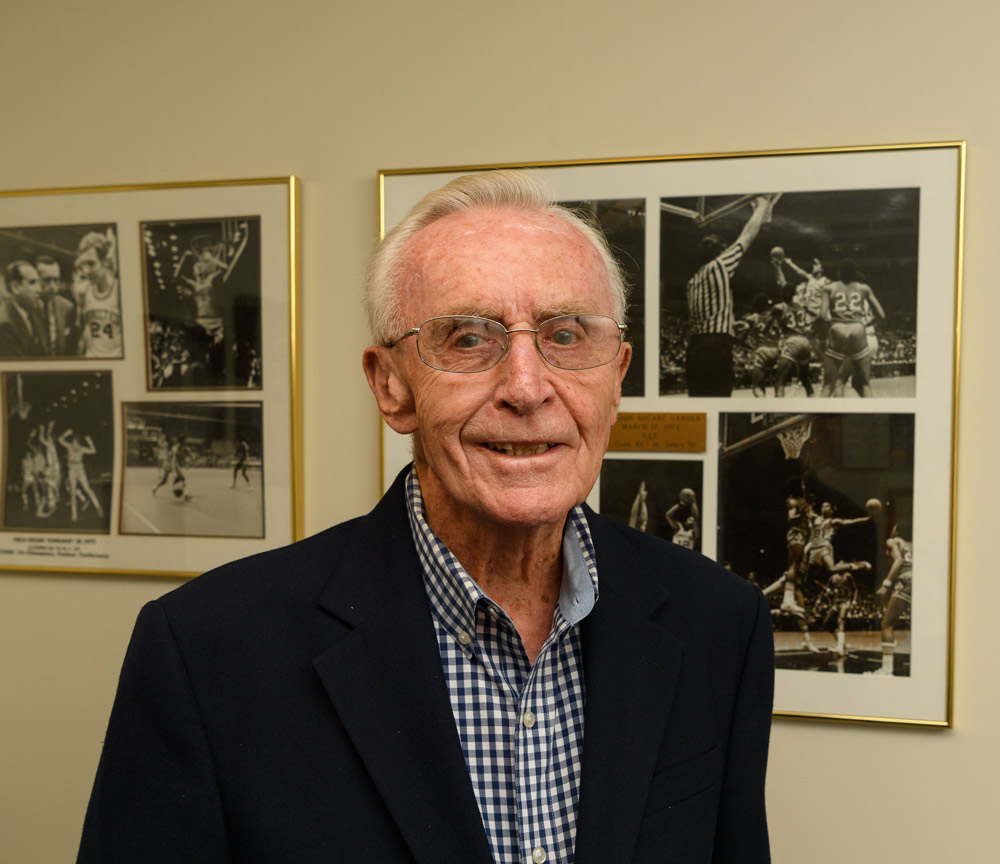
Rowe Gets Top Hall of Fame Honor
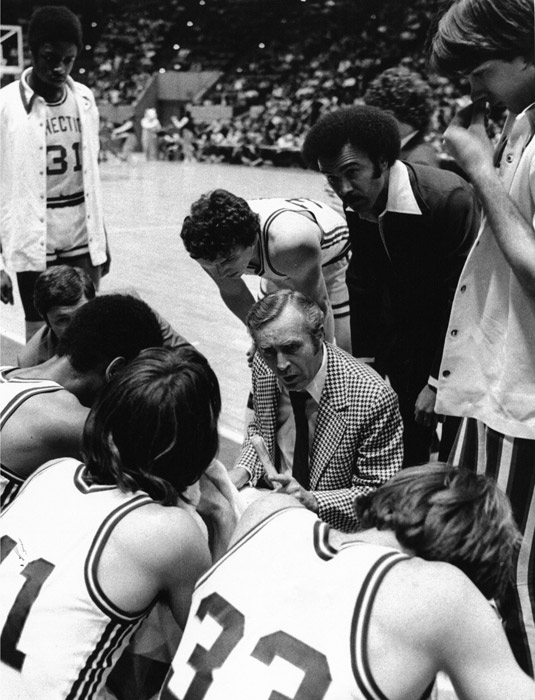
The thing about Dee Rowe, this man who long ago became a sort of living legend both at the University of Connecticut and in the larger world of college basketball, is that if you played for him for one day or for eight seasons, you became one of his guys forever.
I found that out one night in my senior year at Brown. There he was in the locker room after a game, there to say hello, there to give me a hug, there to symbolically say that I was still one of his guys, even if I had only played one year for him at Worcester Academy, and it had not been the easiest year for me.
Is there any better message a coach can send, any better message anyone can send? This is Rowe’s great gift, always has been his great gift, this ability to stay connected to people, whether it’s a note, a phone call, a drop-in at their son or daughter’s junior high basketball game.
Hero
Just after this magazine goes to press in September, Rowe will be awarded the prestigious John W. Bunn Lifetime Achievement Award by the Basketball Hall of Fame. The news delighted many.“He was a surrogate father figure,” says Tony Hanson, a standout player for Rowe’s Huskies from 1973 to 1977. “He was one of the first people who opened up my eyes, who told me there was a bigger world out there beyond basketball, who promised me that he would make sure I graduated.”
He pauses for a second.
“He wouldn’t let me get away. He’s a hero to me.”
“Dee Rowe is the greatest ambassador the state of Connecticut has ever had,” says Tim Tolokan, former UConn associate athletic director. “There’s no one else like him, not even close. This is his 49th year at UConn, and his legacy goes way beyond basketball. He’s got an amazing ability to relate to people.
“And Jim Calhoun and Geno Auriemma? I don’t think they would have been here without Dee Rowe. Because without Dee and his close relationship with Dave Gavitt [founder of the Big East conference], you can make a case that we might not have gotten into the Big East in the first place. And without that everything turns out differently.”
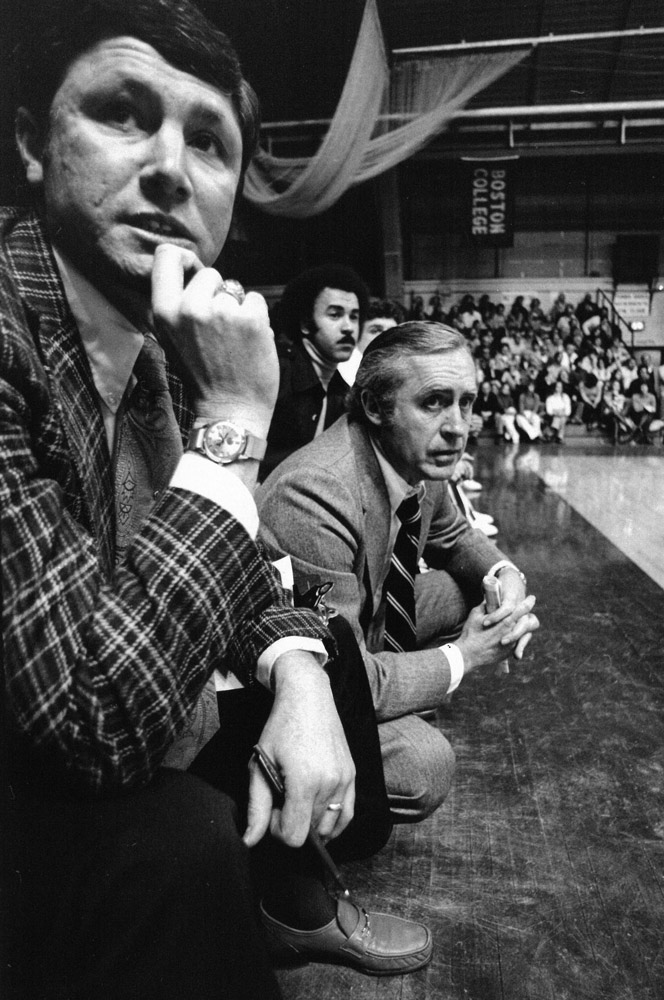
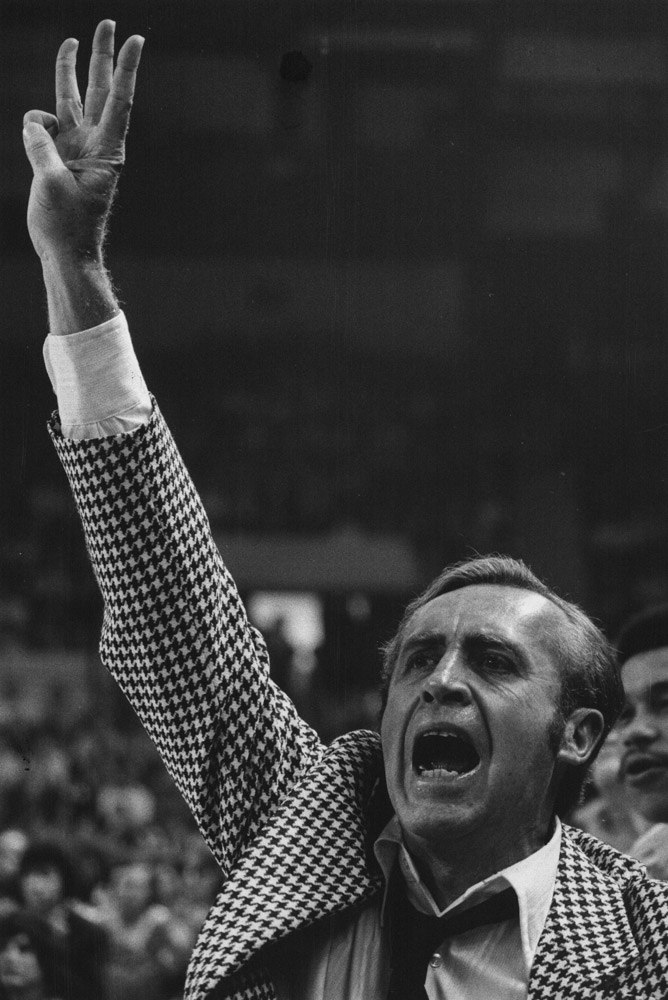 Need captions here for the images above
Need captions here for the images aboveAmbassador
Calhoun recognizes the breadth and depth of Rowe’s accomplishments: “Coach Dee Rowe is a true basketball lifer. Dee’s world has always been, and will continue to be, about family and the game of basketball. In his own special New England region of Worcester, the Cape Cod area, and UConn, Dee Rowe has always been the ultimate ambassador. Through the years, Dee has expanded his impact and influence nationally and around the globe as a superb teacher and mentor. But above all, we continue to pay him the highest honor by calling him ”˜Coach.’”Dee Rowe loves to say that he was “captured by the game” in the third grade of his Worcester childhood. He coached the Huskies from 1969 to 1977 and at age 88, he is still on the roster, still goes to his office at Gampel, and often attends men’s and women’s basketball practices.
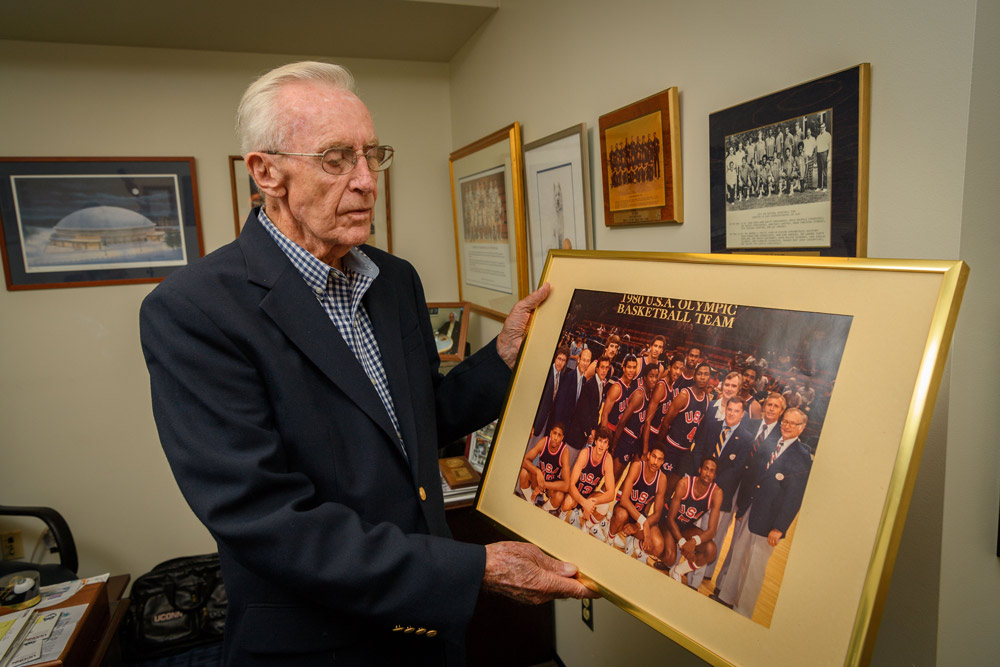 Rowe in August in the Gampel office he still works from at age 88. The photo shows 1980 Team U.S.A. with Rowe as assistant coach and Dave Gavitt as coach. Though the team boycotted the Moscow Olympics after Russia invaded Afghanistan, they played a number of exhibition games against NBA players and others.
Rowe in August in the Gampel office he still works from at age 88. The photo shows 1980 Team U.S.A. with Rowe as assistant coach and Dave Gavitt as coach. Though the team boycotted the Moscow Olympics after Russia invaded Afghanistan, they played a number of exhibition games against NBA players and others.Legend
Those of us to whom he has passed on the love of the game discovered there is justice in the basketball world when Rowe was named to receive the prestigious Hall of Fame award.
Just how big an honor is this?Past winners include John Wooden, Red Auerbach, Bob Cousy, Dave Gavitt, Pat Summitt, and the Harlem Globetrotters. That’s how big.
And I know this: it’s well deserved. The innumerable people he’s coached, the legions of people he’s mentored, the people he’s tutored at all levels of the game, and the countless people he’s touched in his life outside basketball would surely agree.
Coach Auriemma recently expressed his gratitude to Dee, his recognition of Dee’s continuing contribution to UConn, and his belief that even this award isn’t quite big enough for the likes of Dee Rowe
“There is no award existing today or that could be created that is going to do justice to what Dee has meant to the countless people he has touched in his life and what he has meant to his family and the game of basketball; but the John Bunn Award comes close.
“Dee is a man who I admire as much as anyone and he has been a tremendous ambassador of the game and of UConn for as long as I can remember. He has supported me since I arrived on campus as a young coach 32 years ago and he is still there for me now. I will be forever grateful for his guidance and I am thrilled that he is being recognized with this prestigious award. I know he is very proud and we are proud that he is ours,” said Auriemma.
””bill reynolds, a columnist at the providence journal, is writing a book about rowe.

Honoring Dee Rowe
UConn honors Rowe’s award on Friday, October 20, in Hartford at The Bushnell Center for the Performing Arts at 8 p.m. Speakers include Auriemma, Calhoun, and Hanson, as well as emcee Bill Raftery of CBS Sports, UConn men’s coach and former player Kevin Ollie, former players Dom Perno, Bob Staak, Robert “Snake” Taylor, and former Big East commissioner Mike Tranghese. For more information and tickets, visit s.uconn.edu/roweevent.
-
Building a Better Race Car
Building a Better Race Car

What’s the best part of being a member of UConn’s Formula Society of Automotive Engineers (FSAE)? For many it’s a day in mid-July.
Most of the year, the student club toils away doing everything you could imagine goes into designing and building a Formula-style race car ”” except driving it.
Just one member gets behind the wheel for the club’s two competitions, in Michigan and Canada, at the end of each spring semester.
But, after all the races are done (this past spring UConn’s car ranked number 22 out of 109 teams in Michigan and number 8 out of 25 teams in Canada), the engineering students get together for a team drive day, in which all members get to take their baby for a spin. “It’s a lot of excitement because we get to see the car from nothing but some metal tubes all the way to a race car that competes. Then comes the next wave of excitement where you realize you’re going to get to drive the car and kind of feel the power behind something you’ve built,” says the club’s lead powertrain engineer Kenneth Brown ’19 (ENG).
””Emma casagrande ’18 (CLAS)
-
It May Take only a Little Exercise to Make You a Lot Happier
It May Take Only a Little Exercise to Make You a Lot Happier
You don’t have to spend hours at the gym or work up a dripping sweat to improve your mood and feel better about yourself, researchers at the University of Connecticut and Hartford Hospital say in a new study.
If you lead a sedentary lifestyle ”“ spending large parts of your day sitting at home or at work ”“ simply getting out of your chair and moving around can reduce depression and lift your spirits.
“We hope this research helps people realize the important public health message that simply going from doing no physical activity to performing some physical activity can improve their subjective well-being,” says Gregory Panza, the study’s lead author. Panza is an exercise physiologist at Hartford Hospital and a doctoral candidate in UConn’s Department of Kinesiology.
“What is even more promising for the physically inactive person is that you do not need to exercise vigorously to see these improvements,” Panza continues. “Instead, our results indicate you will get the best ”˜bang for your buck’ with light- or moderate-intensity physical activity.”
For those keeping score, light physical activity is the equivalent of taking a leisurely walk around the mall with no noticeable increase in breathing, heart rate, or sweating, says Linda Pescatello, Board of Trustees Distinguished Professor of Kinesiology and senior researcher on the project. Moderate-intensity activity is equivalent to walking a 15- to 20-minute mile with an increase in breathing, heart rate, and sweating, yet still being able to carry on a conversation. Vigorous activity is equivalent to a very brisk walk or jogging a 13-minute mile with a very noticeable increase in breathing, heart rate, and sweating to the point of being unable to maintain a conversation.
The study looked at 419 generally healthy middle-aged adults who wore accelerometers on their hips to track physical activity over four days. Participants also completed a series of questionnaires asking them to describe their daily exercise habits, psychological well-being, depression level, pain severity, and extent to which pain interfered with their daily activities.
Here’s what the researchers learned:
- People who reported higher levels of sedentary behavior also reported lower levels of subjective well-being, meaning those who sat around a lot were the least happiest. Subjective well-being is defined as the positive and negative evaluations that people make of their own lives. These results confirmed previous studies.
- In general, physical activity improved people’s sense of well-being. Yet different intensities of physical activity were more beneficial to some people than others. For instance, people who participated in light-intensity physical activity reported higher levels of psychological well-being and lower levels of depression. People who participated in moderate intensity physical activity reported higher levels of psychological well-being and lower levels of pain severity.
- People who led sedentary lives and engaged in light or moderate physical activity showed the greatest improvement in overall sense of well-being. “The ”˜more is better’ mindset may not be true when it comes to physical activity intensity and subjective well-being,” says Panza. “In fact, an ”˜anything is better’ attitude may be more appropriate if your goal is a higher level of subjective well-being.”
- While light and moderate physical activity clearly made some people feel better about themselves, when it came to vigorous activity, the results were neutral. There was no positive or negative association found between high-intensity physical activity and subjective well-being.
The last finding is actually good news for folks who enjoy hard, calorie-burning workouts, as it doesn’t support a widely reported recent study that found high-intensity workouts significantly lowered some people’s sense of well-being.
“Recent studies had suggested a slightly unsettling link between vigorous activity and subjective well-being,” says Beth Taylor, associate professor of kinesiology and another member of the research team. “We did not find this in the current study, which is reassuring to individuals who enjoy vigorous activity and may be worried about negative effects.”
Many previous studies have attempted to identify the best exercise regimen to improve people’s sense of well-being. Yet no clear consensus has emerged. Some studies say moderate or vigorous activity is best. Others say low-intensity exercise is better. The differences, the UConn researchers say, may be due to the way the studies were designed and possible limitations in how people’s well-being and levels of physical activity were measured.
The UConn study is believed to be the first of its kind to use both objective (accelerometers) and subjective (questionnaires) measurements within a single group to examine the relationship between the intensity of physical activity and perceptions of well-being.
Yet the UConn research also has its limits, Panza says.
All of the individuals who participated in the UConn study had a generally positive sense of well-being going into the project and were generally physically active. So their answers in the questionnaires need to be framed in that context. Whether the same results would hold true for people with lower subjective well-being or lower levels of physical activity is unknown, Panza says. Also, the conclusions formed in the UConn study are based on information gathered at a single point in time. A longitudinal study that tracks people’s feelings and physical activity over time would go a long way toward helping determine what exercise regimen might be best for different populations, Panza says.
Adds Taylor: “If it doesn’t make us feel good, we don’t want to do it. Establishing the link between different types, doses, and intensities of physical activity on well-being is a very important step in encouraging more people to exercise.”
The study was published in the Journal of Health Psychology in February. Joining on the study were Dr. Paul Thompson, director of cardiology at Hartford Hospital and a professor of medicine at UConn Health, and Professor C. Michael White, head of the Department of Pharmacy Practice at UConn. ””colin poitras ’85 (CLAS)
-
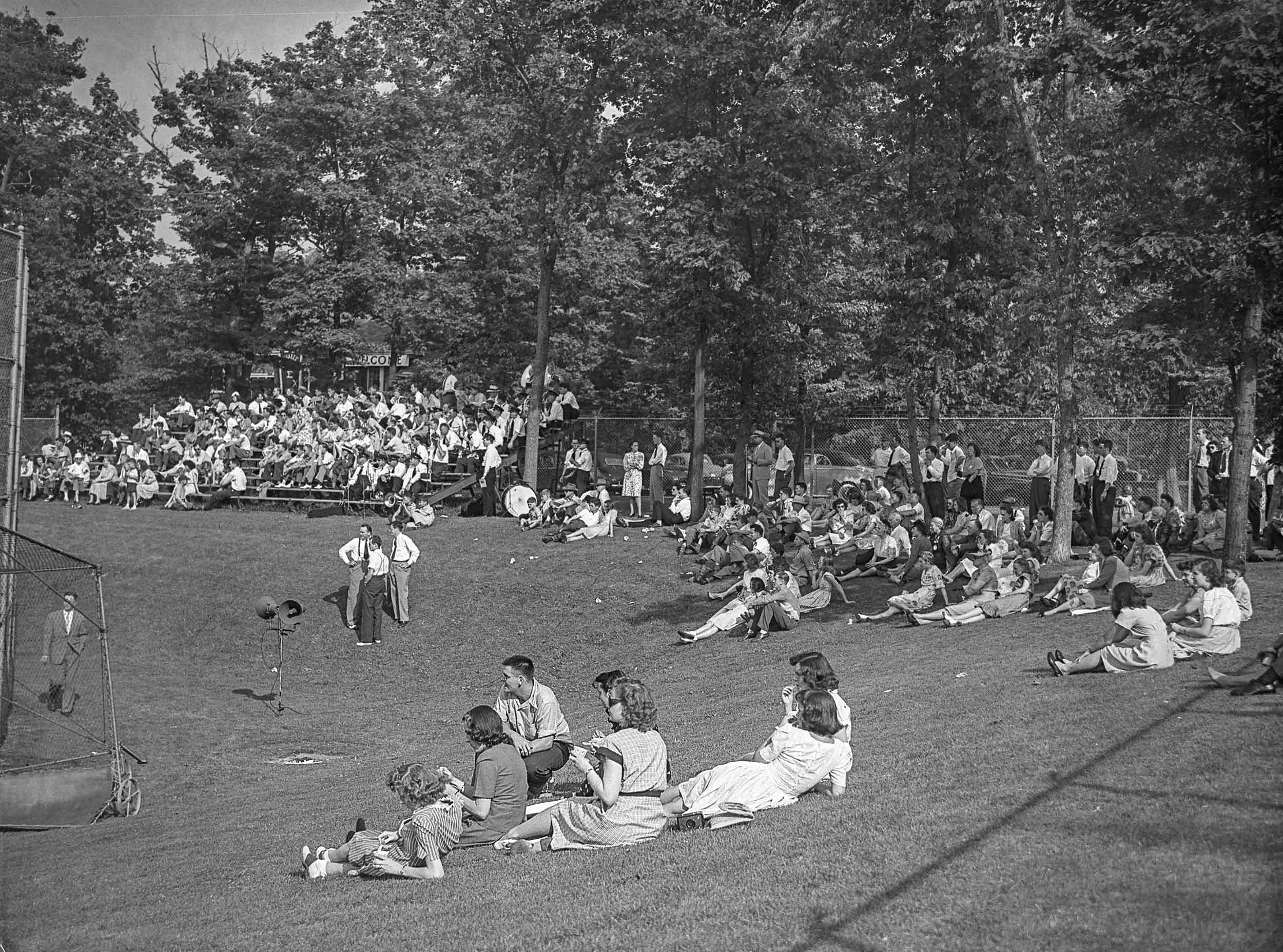
Alumni Day Then and Now
Alumni Day Then and Now
In 1946, students and alums spent Alumni Day lounging in the sun on the hills and bleachers surrounding the UConn baseball diamond to root on their team. Today, Huskies Forever Weekend is the closest event UConn has to this old tradition. While the Homecoming football game still brings students old and new together for a day in the sun, this Husky Pride celebration is now a three-day event. Over the years, alumni have come from as far as Hawaii and Israel to reconnect with old roommates over Then and Now tours around campus and wine and beer tastings from alum-owned vineyards and breweries. There are events centered around 40th and 50th reunion celebrations, but also a number of happenings, such as a 5K race, that invite all alums to join the fun. ””Emma Casagrande ’18 (CLAS)

University of Connecticut Archives
